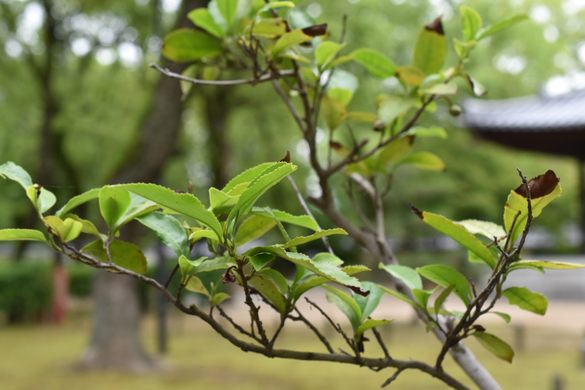Japan’s First Tea Tree
In the oldest zen temple stands a descendant of the very tree that introduced tea to Japanese culture.
Tea is said to have originated in China about 2,700 years ago. It was brought to Japan by a mission of monks returning from Tang, and its earliest cultivation was in 1191, when the Buddhist priest Myōan Eisai sowed tea seeds in the Iwakamibō gardens of Ryōzen-ji Temple, Saga, not far from the ancient settlement of Yoshinogari.
Initially meant to be a medicinal plant, Japanese tea soon evolved into its own kind, with a culture of tea ceremonies developing over the years. Eisai’s tea became what is known as matcha today. It was widely appreciated by Buddhists practicing zen, as they believed it improved one’s body and spirit.
On the grounds of Shōfuku-ji Temple in Fukuoka, the oldest zen temple in Japan originally established by Eisai himself, stands a direct descendant of his tea trees, known as the “Japan’s First Tea Tree.” A small, nondescript tree with lean branches at first glance, it may not be anything extraordinary, but its influence on traditional Japanese culture is irreplaceable.


















Follow us on Twitter to get the latest on the world's hidden wonders.
Like us on Facebook to get the latest on the world's hidden wonders.
Follow us on Twitter Like us on Facebook